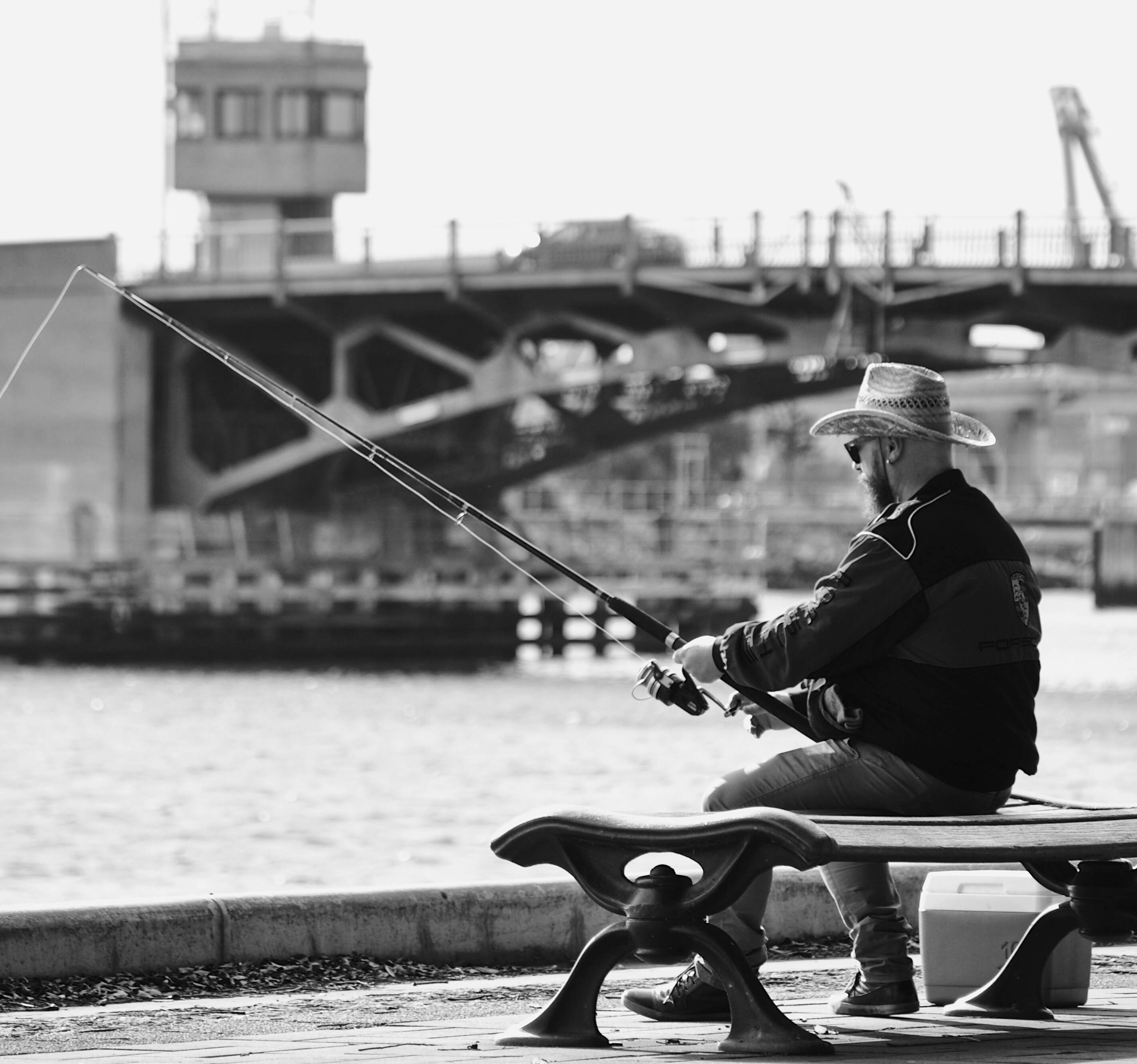
Ultralight Fishing East London Canals My Journey and Essential Tips
If you'd told me in early 2020 that my lifeline through lockdown would be fishing slim city canals in East London with ultralight fishing rods, I'd have raised an eyebrow. Yet there I was, searching for new sparks during the monotony of Covid restrictions, a rod in one hand and Google Maps in the other, rediscovering a part of myself I'd left on distant coasts. What began as a quest for escape soon became an obsession, born from childhood passion and urban curiosity.
This is my story of how I got hooked on ultralight fishing on the East London canals, what ultralight fishing rods I chose, and the practical lessons I've picked up to help new anglers turn overlooked waters into opportunities.adventures.
Discovering Ultralight Fishing Along London's Canals
My First Taste of Fishing
Fishing has been with me since I can remember. Growing up in South Africa, my introduction was a six-foot yellow rod with a stubborn little Mitchell reel jamming up on almost every cast. Christmas present. I didn't choose it, but it became an extension of my arm. I'd spend summer holidays at Arniston fishing for kob, waving at the crayfish divers, and hanging out with neighbors who would eventually become my mentors.
Later, as a teenager, I swapped surfcasting for bass fishing, joining the local club and trawling tackle shops for new lures. If I wasn't at school, I was at the pond, flicking my rod, learning from the old hands, and soaking up every page of that legendary angler's self-published booklet.
A Forgotten Hobby Reignited
Fast forward to life in London. Somewhere along the way, the rods and reels got left behind. Urban fishing just didn't seem to match those sun-bleached memories of South African coasts or dam walls teeming with largemouth bass. To me, canals meant stillness, poles, floats, and maybe the odd carp, not the heart-thumping hunt I craved.
That was until lockdown. Suddenly, everyone was looking for safe ways to escape. Instagram suggested local anglers catching wild-looking perch and pike in city waters with soft plastics. Cue the deep-dive. I tumbled down the rabbit hole of ultralight fishing in Europe, watched Dutch anglers haul out plump perch from Amsterdam canals, and for the first time felt the itch to trade city pavements for urban waterways.
From Social Media to the Canals
I mapped out routes along the Lea Navigation, around Stratford, past the Olympic Park, and right up by West Ham Stadium, wondering whether perch or pike might lurk in those greenish flows. You'd be surprised how much you can scout from your bedroom.
Every spare moment saw me toggling between YouTube and FishBrain, checking catch reports, making mental notes of bridges, overhanging trees, and narrow bends. If you're doing your own recon, trust me, Google Maps is more than just a route-planner for commuters. Zoom in and you'll spot the kinds of features fish love.
Parallels With My Bass Fishing Roots
There was something nostalgic in chasing perch. Stalking these opportunistic hunters brought me back to the bass lakes of my youth. They're drawn to structure, shade, and sudden depth changes. I knew from those weekend club outings that the fun lay in the search. While targeting pike held a certain thrill, I decided to focus on perch at first. Less intimidating teeth, more familiar behavior. Urban waters suddenly felt like wild spaces again.
Choosing My Ultralight Fishing Rod and Spinning Reel Setup
Why I Landed on Shimano and Abu Garcia
When starting ultralight fishing, finding the perfect ultralight rod and reel is key. I wanted reliability, so I turned to trusted brands: Shimano and Abu Garcia. After scouring reviews, Reddit threads, and angler forums, I landed on the Shimano Yasei Perch rod. Its sensitive rod blank, balanced design, and excellent casting distance made it ideal for urban fishing in tight London stretches. Weighing just 87 grams, it’s the definition of light gear.
For the reel, I chose the Abu Garcia Zata SP20. Its compact action, braid-ready spool, and enough backbone to catch big fish sealed the deal. The smooth operation and great casting distance make it a joy to use, especially on long canal walks where heavy reels can tire your wrists. If you’re new to ultralight gear, a setup like this ultralight rod and reel can boost your confidence even in unfamiliar spots.
Staying on Budget and Going Lighter with Ultralight Gear
I capped my budget at £400, and the Yasei rod and Zata spinning reel combo came in well under, leaving room for lures. For ultralight fishing beginners, remember: light means fun. A properly sized spinning rod, matched with a reel like the SP20, keeps your gear manageable. You’ll enjoy hours on the water without feeling weighed down, whether you’re targeting perch or hoping to catch a big fish along the way.
The Fox Rage Micro Lures I Swear By
Why Soft Plastics Rule London's Canals
Success in urban ultralight fishing comes down to matching the hatch and staying versatile. The Fox Rage Micro range quickly became my favorite ultralight lures for light line setups. They're budget-friendly, so you won’t cry if you lose one to a snag (it will happen), and the Ultra UV coloring helps in cloudy canal waters where visibility’s poor. These soft plastics fit perfectly in any tackle box and are ideal for light line fishing.
Here are my go-to picks and why they work:
-
Micro Fry

It mimics a small baitfish with a natural wobble, and the Lemon Tiger color cuts through even murky stretches. -
Micro Grub

Curly tail = steady action. The Pearl and Motor Oil UV colors perform well around shaded bridges on overcast mornings. -
Micro Spikey

Extra soft plastic spines create more movement, provoking lazy perch into biting on slow days. -
Micro Tiddler Fast

Short, darting retrieves spell panic-stricken baitfish to perch, turning structure-heavy pounds into hot spots. -
Mini Fry

For shy fish or very pressured swims, Pink Candy works magic. Small, subtle, and just different enough to entice a take.
These light lures are perfect for targeting small fish in tight urban spaces, making them a must-have in your fishing tackle collection.
A Simple Tip for Rigging Soft Plastics
Here’s a little hack I wish I’d known earlier and one every ultralight angler should try. Instead of just threading the jig head through and hoping for the best, lay your small jig hook against the soft plastic at a 90-degree angle and make a small nick with your fingernail right at the spot where you want the hook to pop out. Feed the hook gently, aiming for your nick. It’s foolproof and keeps the lure perfectly straight every time.
If your lure rips near the entry point (and eventually it will), just trim the plastic and start again. I’ve even caught fish on “ugly” lures that have seen better days. Fish often react to the action, not just the looks. Most anglers know the value of a well-stocked tackle box, and with these ultralight lures, you'll be ready to tackle any urban fishing challenge.
Scouting and Accessing Urban Hotspots in East London
The Power of Local Knowledge and Online Tools
Finding productive fishing spots in urban areas like East London is as much about preparation as it is about the actual fishing. Thorough research can make all the difference between a successful outing and a wasted day. Urban waterways like canals and rivers may seem daunting at first, but a bit of detective work will uncover hidden gems teeming with perch and other species. Here's how you can make the most of your scouting efforts.
Key Steps to Identifying Productive Fishing Spots
Use Digital Tools
-
-
Google Maps:
Start by studying overhead imagery. Look for features like bridges, bends in the canal, overhanging vegetation, moored boats, pontoons, or any other structure that might offer fish shelter and food. Pay attention to areas with darker water (indicating depth) or shaded zones near structures. -
FishBrain App:
This app isn't just for logging your catches—it’s a goldmine for discovering active fishing locations. It provides catch reports with details like time, lure type, and even water conditions. Use this intel to determine what’s working in the area. -
Navionics App:
Though primarily designed for larger bodies of water, this tool can help you gauge depth and underwater terrain in some urban spots.
-
-
Local Forums and Groups
- Join local angling forums or Facebook groups dedicated to fishing in East London. Anglers in these communities are often willing to share advice and insights about productive spots and seasonal fish movement.
- Reddit (subreddits like r/Fishing) can also offer location-specific tips from fellow anglers.
-
Explore on Foot
- Spend time walking along towpaths, particularly around canals near Stratford, West Ham, or other backwater areas. Look for signs of fish activity, such as jumping baitfish, swirls on the surface, or birds diving for food.
- Pay attention to features like junctions where two canals meet, water inlets, or outflows—these are often hotspots for perch because they provide ambush points with consistent food flow.
-
Talk to Locals
- Don’t hesitate to strike up conversations with dog walkers, boaters, and fellow anglers. Many old-timers have a wealth of knowledge, and a quick chat can often reveal overlooked spots or tips on the best times to fish.
-
Test and Record
- Start with ultralight tackle and experiment with small lures or bait. Keep a fishing log to record what works and where. Over time, you’ll build a personalized map of the best spots.
Tips for Spotting New Fishing Locations
- Water Features:
- Bridges: Fish tend to gather around these structures for shade and food.
- Overhanging Trees or Reeds: These provide cover for fish to hide and ambush prey.
- Depth Changes: Look for deeper sections of the canal or river, often indicated by darker patches of water.
- Junctions and Inflows: Areas where canals meet or water enters from drains or small rivers are magnets for fish.
- Artificial Structures:
- Pontoons, boat docks, moored boats, or walls with cracks and crevices are excellent foraging and hiding spots for fish like perch.
- Signs of Fish Activity:
- Look for ripples, swirls, or baitfish jumping on the surface. Birds like herons or cormorants hunting in a specific area are another indicator of fish presence.
- Tides (if applicable):
- Urban rivers, like those connected to the Thames, can be affected by tides. Low or rising tides often concentrate fish in deeper channels or near structures.
Bullet List of Resources for Identifying New Spots
- Digital Tools:
- Google Maps (satellite view for spotting features)
- FishBrain app (catch reports and community advice)
- Navionics app (depth and underwater terrain)
- Street View (to check for accessibility and landmarks)
- Local Community Resources:
- Facebook groups (East London fishing communities)
- Reddit (r/Fishing and location-specific threads)
- Angling forums (location-specific advice)
- Books and Guides:
- Local fishing guides or books focused on urban angling
- Canal and River Trust maps or publications
- On-Site Scouting:
- Walk along towpaths or riverbanks to observe water features and signs of activity.
- Weather and Tides Apps:
- Use apps such as Windy or My Tide Times to understand weather conditions and tidal flows, especially for tidal sections of rivers.
Safety and Etiquette
Fishing in urban areas means sharing public spaces with others, so it’s important to stay mindful and respectful.
- Always keep pathways clear and be courteous to joggers, cyclists, and walkers.
- Dispose of rubbish, including fishing line trimmings, responsibly to protect wildlife and maintain a clean environment.
- Stick to mornings or late afternoons for quieter sessions and better fish activity.
- Carry a small first aid kit and stay alert, especially when fishing alone in secluded areas.
By combining digital tools, local knowledge, and on-the-ground exploration, you can uncover East London's hidden fishing gems. Urban angling isn't just about the catch—it’s about the adventure of discovery, the connection with your surroundings, and the joy of spending time in nature amidst the city buzz.
Essentials for Freshwater Fishing in the UK
Licenses and Legalities
Don’t skip this part. You need a rod license from the UK’s Environment Agency to fish freshwaters—including canals. It’s fast to get online and costs much less than a fine. I was pleasantly surprised to see my license fee supported fisheries and local environmental projects, and it arrived in a couple of days. Check for local restrictions too. Not every canal stretch allows fishing. Signage is usually clear, but apps and the Canal & River Trust site have comprehensive maps to double-check.
Landing Nets, Mats, and Fish Safety
To protect fish health, bring a landing net and a soft fish mat. They’re small investments and usually fit in a backpack with the rest of your ultralight kit. Nets help you land fish safely without lifting them out of the water by the line (a rookie mistake), while mats ensure you can unhook and release fish gently.
Practical Tips for New Urban Anglers
- Travel light. You’ll be covering distance, so resist the urge to bring every lure you own.
- Vary your retrieve. Perch can be finicky. Experiment with slow, steady pulls or sudden jerks.
- Focus on structure. Bridges, pilings, and moored boats are your best friends.
- Use soft plastics in UV colors for murky waters, and natural shades in clear water.
- Respect the space, other anglers, and passersby. Urban fishing is about blending in, not standing out.
- Keep learning. Chat with other anglers, try new lures, and use every blank day as a lesson.
Making the Most Out of Your Urban Fishing Adventure

Ultralight fishing on East London’s canals is more than just a hobby. It’s a reconnection—with nature, your city, and a quieter, more mindful version of yourself. Each trip is a small story, each catch a spark that reignites your sense of adventure. What began as a way to break the cycle of lockdown monotony has become a lifelong pursuit. The canals are full of surprises if you know where to look.
If you’re just starting out, don’t get tripped up by gear envy or perfectionism. The real joy is getting outside, discovering new places, and learning something every time you cast. Take the lessons from other anglers, share your own, and enjoy the process. And remember, sometimes the ugliest, most beat-up lure in your box is the one a perch has been waiting for all day.
FAQ
-
What is the best reel size for ultralight fishing gear?
When using ultralight fishing gear, a small spinning reel in the size range of 1000 to 2500 is ideal. These reels balance well with ultralight rods and are perfect for handling lighter lines, giving you better accuracy and control when targeting smaller fish. -
Can ultralight rods handle large fish like Pike?
Yes, ultralight rods can surprise you with their ability to handle large fish like Pike. With proper technique and a steady hand, the flexible nature of ultralight rods absorbs the fight, allowing you to land larger catches despite the lighter setup. -
Do I need special bait for ultralight fishing?
Small bait is key when ultralight fishing. Tiny lures, such as soft plastics, spinners, or micro-crankbaits, work best since they mimic the smaller prey most fish are naturally drawn to. Even big fish often go for small bait when presented effectively. -
What line should I pair with my ultralight gear?
Light lines in the 2-8 lb test range are typically used for ultralight fishing setups. These lines minimize resistance, cast smoothly, and enhance sensitivity, making it easier to detect even the faintest nibbles from fish. -
Why do most people recommend ultralight fishing for beginners?
Ultralight fishing gear is approachable and forgiving for newcomers. It allows anglers to focus on technique without being burdened by heavyweight setups. Plus, the joy of catching even small fish feels amplified with ultralight gear, making it an engaging and rewarding experience for beginners.




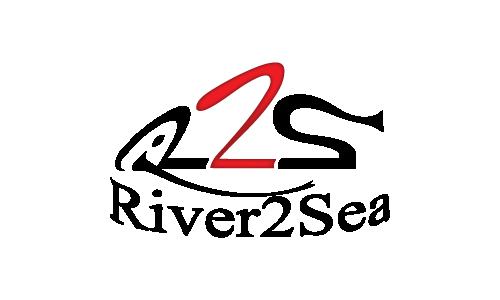


.png)


 1.png)
 1.png)





.png)
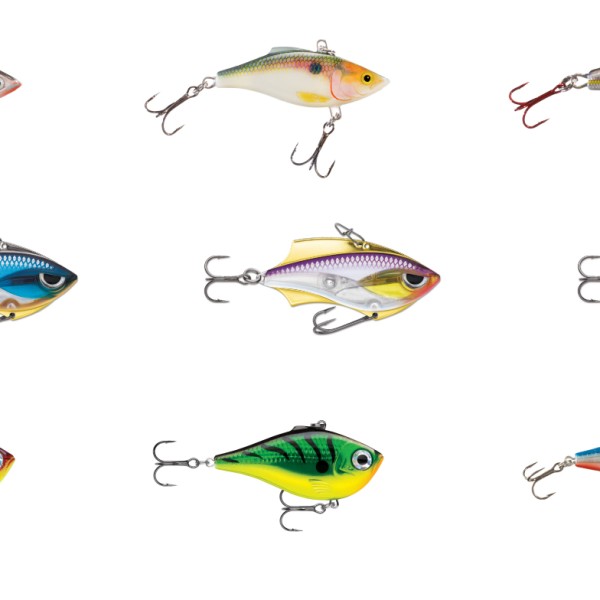
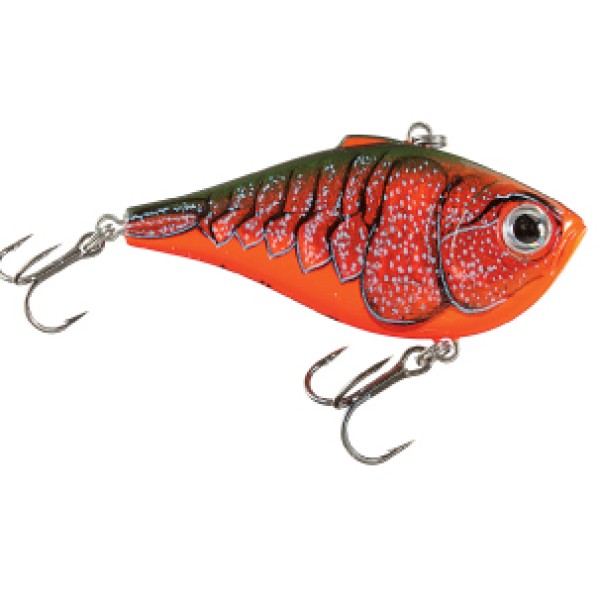
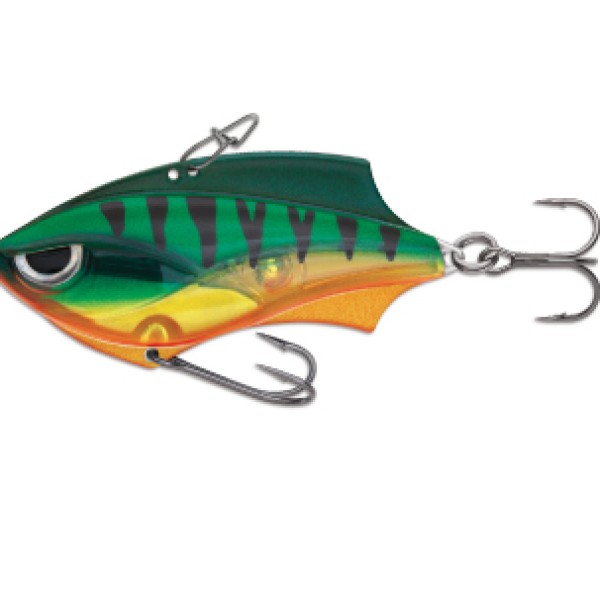
 Newsletter
Newsletter

